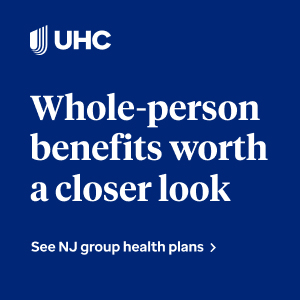
South Jersey school districts face budgetary distress due to COVID-19 pandemic, says new Rutgers University–Camden research
CAMDEN – South Jersey’s largest school districts are facing unprecedented financial distress due to shortfalls in federal and state funding caused by reactions to the COVID-19 pandemic. A new research report from the Senator Walter Rand Institute for Public Affairs at Rutgers University–Camden provides insight into the scope of how this imminent crisis will impact communities and families across the region.
“Seventeen of South Jersey’s largest 25 school districts are at risk of being unable to sustain pre-pandemic levels of K-12 education,” says Michael Hayes, author of the study and an assistant professor of public policy and administration at Rutgers University–Camden. “These more-at-risk districts would need to raise local property by at least 5 percent to counteract a 10 percent reduction in school aid.”
Governments often reduce school aid when balancing their budgets during economic recessions, says Hayes, who notes that significant reductions in state aid are problematic for New Jersey school districts because many of them depend on federal and state revenues to help fund schools.
The Rutgers–Camden researcher developed risk exposure factor (REF) rankings for the largest school districts in southern New Jersey. The findings suggest that 17 of those districts – and their municipalities – face extraordinary increases in property taxes to close budgetary shortfalls of 10 percent.
Additionally, at least eight of the more-at-risk school districts face significant obstacles in raising local property taxes in response to a reduction in school aid because the residents in these school districts already face higher-than-average local tax burdens and levels of economic distress.
Across South Jersey, the Camden City school district is the most at risk. If faced with a 10 percent reduction in school aid, the city would need to compensate by raising local property taxes by 454 percent. The Bridgeton school district also is at significant risk, requiring a property tax increase of 245 percent.
The Vineland school district is the most exposed, according to the Rutgers–Camden study. “Relative to the other districts, Vineland is going to have a major budget gap if there are state aid cuts,” says Hayes. Increased revenue from property taxes is unlikely because city residents already face a higher-than-average property tax burden.
By comparison, the Bridgeton, Camden, and Pemberton Township school districts hold higher-than-average REF scores, but lower-than-average local tax burdens, which theoretically could present those municipalities with relatively more ability to raise revenues to offset other reductions in school aid. “Bridgeton and Camden have enormously high poverty rates, which will likely prevent them from significantly increasing local property taxes,” Hayes notes.
The news is dire, but Hayes offers a silver lining for schools: their reliance on property tax revenue gives them a more stable base than most other publically funded services. “New Jerseyans are often concerned about their property taxes, but there is an upside: property tax represents a revenue stream that is less volatile than sales tax or income tax, both of which are the first revenue streams to drop off in a crisis,” he says. “Since it takes time for the value of homes and property to decline, property tax is a relatively predictable resource.”
One potential factor that can alleviate these budgetary shortfalls is the availability of short-term financial capital, such as cash and cash equivalents, on the school districts’ balance sheets. These resources offer school districts extra liquidity to pay for short-term obligations like employee payrolls and supplies. “Unfortunately, school districts are disincentivized to have ‘rainy day’ funds, since state and federal supporters would question why the district needs investment when it carries a balance on its books,” says the Rutgers–Camden researcher. “In anticipation of future recessions, the State of New Jersey might consider encouraging districts to maintain unrestricted funds without fear of funding penalties.”
Darren Spielman, executive director of the Senator Walter Rand Institute for Public Affairs at Rutgers University–Camden, notes that the Rutgers–Camden research center strives to provide information and analysis that the community needs to make informed decisions. “If education funding cuts become a reality,” says Spielman, “this report seeks to help policymakers distribute those cuts a reasonably as possible and to help school districts plan for their futures.”
The Senator Walter Rand Institute for Public Affairs at Rutgers University–Camden addresses public policy issues impacting southern New Jersey through applied research, community engagement, and organizational development.
Table 1. Risk Exposure Factor Rankings for the Largest School Districts in South Jersey | ||||
Rank | School District | County Name | REF Score | A 10% reduction in school aid would require a… |
1 | Camden City | Camden | 45.44 | 454.4% increase in local property taxes |
2 | Bridgeton City | Cumberland | 24.46 | 244.6% increase in local property taxes |
3 | Pleasantville City | Atlantic | 6.85 | 68.5% increase in local property taxes |
4 | Pemberton Twp | Burlington | 5.91 | 59.1% increase in local property taxes |
5 | Vineland City | Cumberland | 5.82 | 58.2% increase in local property taxes |
6 | Millville City | Cumberland | 5.58 | 55.8% increase in local property taxes |
7 | Pennsauken Twp | Camden | 1.33 | 13.3% increase in local property taxes |
8 | Atlantic City | Atlantic | 1.17 | 11.7% increase in local property taxes |
9 | Gloucester Twp | Camden | 1.11 | 11.1% increase in local property taxes |
10 | Black Horse Pike | Camden | 1.06 | 10.6% increase in local property taxes |
11 | Winslow Twp | Camden | 0.93 | 9.3% increase in local property taxes |
12 | Deptford Twp | Gloucester | 0.86 | 8.6% increase in local property taxes |
13 | Toms River Regional | Ocean | 0.83 | 8.3% increase in local property taxes |
14 | Monroe Twp | Gloucester | 0.73 | 7.3% increase in local property taxes |
15 | Washington Twp | Gloucester | 0.60 | 6.0% increase in local property taxes |
16 | Egg Harbor Twp | Atlantic | 0.60 | 6.0% increase in local property taxes |
17 | Jackson Twp | Ocean | 0.57 | 5.7% increase in local property taxes |
18 | Burlington Twp | Burlington | 0.49 | 4.9% increase in local property taxes |
19 | Lacey Twp | Ocean | 0.45 | 4.5% increase in local property taxes |
20 | Brick Twp | Ocean | 0.35 | 3.5% increase in local property taxes |
21 | Lenape Regional | Burlington | 0.28 | 2.8% increase in local property taxes |
22 | Evesham Twp | Burlington | 0.27 | 2.7% increase in local property taxes |
23 | Moorestown Twp | Burlington | 0.14 | 1.4% increase in local property taxes |
24 | Cherry Hill Twp | Camden | 0.14 | 1.4% increase in local property taxes |
25 | Mount Laurel Twp | Burlington | 0.12 | 1.2% increase in local property taxes |
Notes: Risk Exposure Factor is the ratio of uncontrollable revenues (e.g., federal aid, state aid, miscellaneous revenues, etc.) and own-source revenues (e.g., local property taxes).






